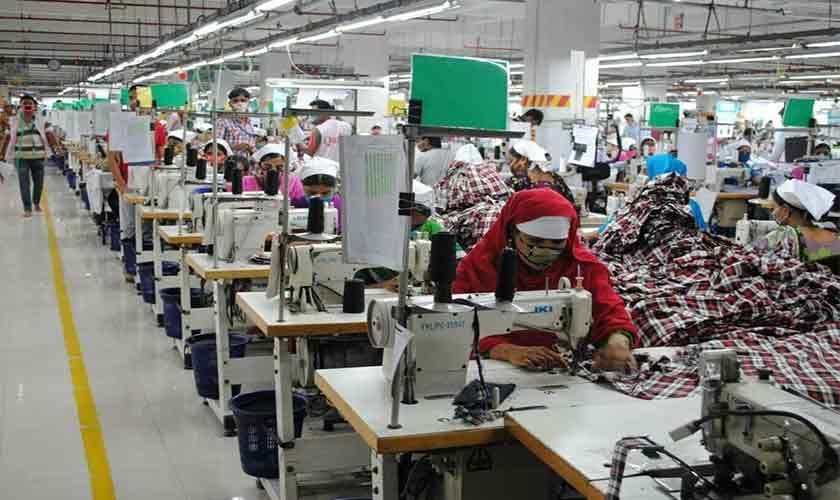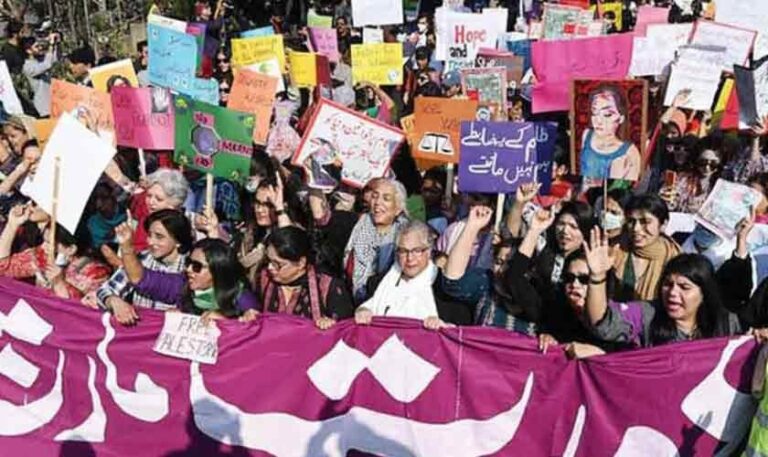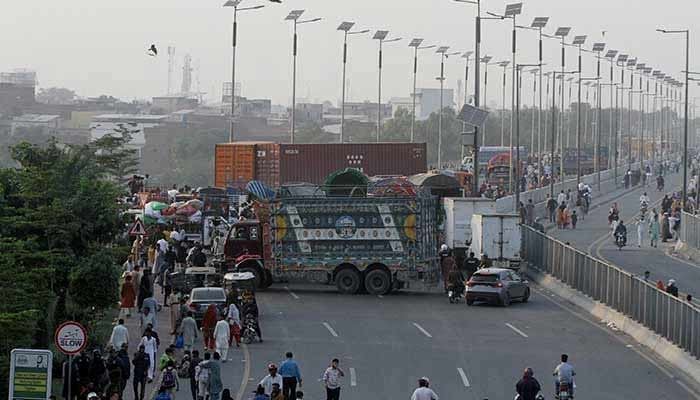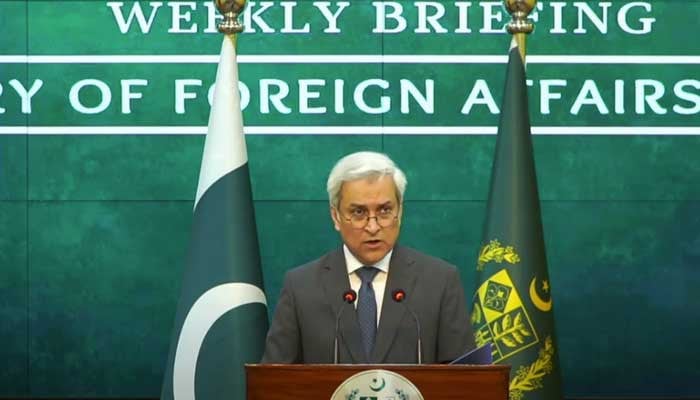
#Tolerated #inequality #Political #Economy
In June this year, the World Economic Forum released the 19th edition of its Global Gender Gap Report, ranking Pakistan at the bottom (148th). The report measures countries’ progress toward gender equality along four key dimensions: economic participation and opportunity; Educational attainment; Health and Survival; and political empowerment. As highlighted in this report, Pakistan ranks 147th in “Economic Participation and Opportunity”. Since its inception in 2006 it has consistently ranked in the bottom four countries in the WEF’s Global Gender Gap Report.
Pakistan’s gender gap in the labor force participation rate (LFPR) is one of the highest in the world. When we compare the LFPR for women (25 percent) and men (81 percent), there is a 56-point difference. Over the past 15 years, female LFPR has averaged about 23 percent. The piece focuses on labor force participation and recommends some reforms to improve women’s labor force participation.
Women constitute 49 percent of Pakistan’s population of 241 million and 23 percent of the labor force. An estimated 47 million women are out of the labor force. Even when women want to participate in the labor force, they are unable to find jobs. There is a gender gap in unemployment. It is 5.5 percent for male workers and 9.2 percent for female workers. In urban areas, the unemployment rate for women has risen to 16.4 percent compared to 6 percent for men.
Women’s share of employment in gross wages is less than 20 percent because they are mainly engaged in the contribution of family workers (56 percent), ultimately working without pay. Of all working women in Pakistan, 75 percent are in vulnerable employment, a combination of self-employed work and shared (unpaid) family work, making them vulnerable to economic shocks and both invisible and vulnerable.
When women work, they are primarily engaged in agriculture (68 percent) as support family workers, followed by community/social and personal services (15.8 percent) and manufacturing (14.2 percent). More than 40 percent of employed women work part-time (less than 35 hours per week), compared to 7 percent of men. Statistics show that Pakistan has a youth population (aged 15-24) of 50 million, of which 18 million are neither in education, training or employment (NEET). This translates into a rate of 36 percent. The NEET rate for female youth is 56 percent.
The gender wage gap for monthly earnings is 19 percent, meaning a female worker earns Rs 81 for every Rs 100 earned by a male worker. The median gender wage gap (showing the experience of a typical worker) is double the average wage gap, at 37.5 percent. The factor-weighted gender wage gap, an adjusted measure of wage inequality that controls for key characteristics of male and female workers—such as age, education, occupation, sector (public/private) and working hours (part-time/full-time), is also 30 percent. This indicates that there is gender bias or discrimination at the workplace level which needs to be addressed through law reform.
Article 18 of the Constitution allows every citizen to enter into any legal profession or occupation. Gender inequality is enshrined in law. However, there is no legislation that prohibits discrimination at work and requires equal pay for work of equal value. Article 25 of the Constitution guarantees equal treatment to all citizens. It provides that there shall be no discrimination on the basis of sex. At the same time, it allows the state to take positive action to protect women and children. These protective measures (banning night work and some hazardous work), however, have led to reduced economic opportunities for women.
According to the Women, Business and Law Index 2024, Pakistan has a score of 58.8 out of 100 (the assessment is based on Sindh laws). The WBL measures how laws and regulations affect women’s economic opportunity and participation. The Labor Rights Index, a de jure index produced by the Vigendicator Foundation and the Center for Labor Research, gives Balochistan the highest score (70.5 out of 100), followed by Sindh (59.5), Khyber Pakhtunkhwa (59), Punjab (53.5) and Islamabad (41). The LRI, covering 145 countries, identifies access to, or lack of, labor rights in local legal systems while comparing local laws with international labor standards.
Labor laws in Pakistan do not afford women workers the same rights as men. They limit the occupations in which they can engage, allow discrimination in the workplace, do not require separate washing facilities for women in the workplace, link workplace day care centers to the number of women only and allow employers to fire a female worker during pregnancy or marriage. It is interesting that the National Gender Policy Framework 2021 does not even refer to the improvement of labor legislation or cooperation with the Ministry of Overseas Pakistanis and Human Resource Development or Labor Departments.
There is no legal right to flexible or remote work arrangements. Legislation should include the right to request flexible/remote work and ban discrimination for part-time status. It deals with safety/mobility barriers and helps mothers to work again.
To improve female labor force participation and ultimately increase Pakistan’s ranking on the WEF Global Gender Gap Report, the following reforms must be implemented starting from the federal capital.
Right to choose a profession
Although Article 18 gives the right to choose one’s occupation, women workers in the federal capital are legally restricted from working in any office or factory beyond 7 pm. The Factories Act 1934, a colonial holdover, banned the employment of women beyond sunset. Twenty-one years after its enactment, the law still prohibits working past 7 p.m.
Labor laws limit employment opportunities for the 75 million working-age women in Pakistan, restricting the jobs they can do and where and when they are allowed to work. Apart from mining, there is an extensive list of hazardous operations where the employment of women and children is prohibited. Rather than basing restrictions on a risk assessment for each job, focusing on training women for difficult or hazardous work, providing them with the necessary personal protective equipment, and restricting work in hazardous operations to pregnant or nursing women only, labor legislation prohibits the employment of women in such occupations outright.
Sex-based taboos (eg, ban on night work/heavy machinery) need to be replaced with risk-based, gender-neutral rules and safeguards (eg safe company transport, security and written consent for night work etc.). Research has already shown that access to safe and secure transportation (employer-provided or public transportation) can improve female labor force participation.
Equal Pay and Prohibition of Discrimination
Pakistan currently lacks a country-wide, clear legal guarantee of “equal remuneration for work of equal value” linked to ILO Convention 100. No provinces have yet defined “compensation” as broadly as C100, although Balochistan has introduced principles and gender-neutral job evaluations. Draft labor codes in Punjab and Sindh (if adopted) will be harmonized with C100.
Discrimination in employment or occupation, direct or indirect, on the basis of sex, religion, gender, caste, ethnic background, race, color, creed, sect, age, language, marital status, pregnancy and maternity, family responsibilities, disability, trade union membership, political opinion or place of residence must be prohibited. These provisions have been included in detail in the upcoming Punjab and Sindh Labor Code. Legislation in Balochistan enacted in recent years includes necessary reforms on this subject.
Legislation also requires workers to deposit wages into their own accounts. It improves women’s control over their income and also ensures electronic record keeping of wage payments.
Family addresses and protection from dismissal
Pakistani laws generally provide for 12 weeks of paid maternity leave (with some variation by province and sector). Although this meets the ILO’s basic requirement, it falls short of the 14 weeks recommended by the ILO under C183. Under the Maternity and Paternity Leave Act 2023, the discriminatory provisions regarding reduced maternity leave (180 days to 120 days for the first child, and 90 days for the third) should also be eliminated.
Pakistan has no system of maternity benefits for the government for private sector workers. This may discourage women from hiring.
Extending leave periods and cost-sharing through social insurance schemes can improve women’s retention in the workforce (coverage of all workers by social security). There is no provision for paternity leave (under the Punjab Factory Act) or parental leave. There is a need to ban the dismissal of women workers during pregnancy. Legislation should also include paid nursing breaks and require adequate facilities for women workers in the workplace. These provisions have been included in the draft Punjab and Sindh Labor Code.
Day care centers
Current legislation requires creches for children under the age of six in certain factories where women are commonly employed. Still, coverage is narrow, factory-based (in Punjab, it also covers offices) and the number of women (although legislation has been amended in all provinces except Islamabad), excluding many employers and sectors where women work (services, agriculture, small businesses). Instead of linking the establishment of crèches or daycare facilities to the number of female workers, they should be linked to the total number of workers, regardless of their gender. Similarly, instead of maintaining the upper limit of 70 workers required under the Day Care Centers Act of 2023, a cluster-based or community-based approach may be adopted for day care centers.
Secure flexible, part-time and remote work
There is no legal right to flexible or remote work arrangements. Legislation should include the right to request flexible/remote work and ban discrimination for part-time status. It deals with safety/mobility barriers and helps mothers to work again. Flexible working hours and telecommuting while managing household responsibilities can help more women stay employed. Currently, the lack of part-time or remote work options in the formal sector forces many Pakistani women to drop out of the workforce or opt for home-based informal work.
Expand statutory coverage to less protected workers
Women mainly work in agriculture and service sectors. Legislative reforms should clearly cover minimum wages for agriculture, domestic, domestic and platform workers, OSH, social security, protection against harassment and maternity/parental rights. Although all provinces except Islamabad have legislated on home-based work, draft labor codes in Punjab and Sindh already cover all the above-mentioned categories of workers.
Improving the FLFPR can unlock extraordinary economic returns for the nation. According to World Bank studies, eliminating gender distortions in Pakistan’s markets could increase GDP by about 25%. Another report shows that closing the women’s employment gap to the lower-middle-income country (LMIC) average (41 percent) could increase Pakistan’s GDP by 9 to 23 percent.. Although legal reform alone is not a panacea, legal equality leads to labor market equality.
Iftikhar Ahmad is the founder of the Center for Labor Research, Pakistan. He can be reached at ia72@cornell.edu
Sobia Mir is Director at Labor Lens of Pakistan.






